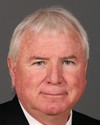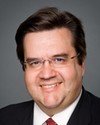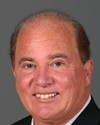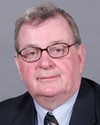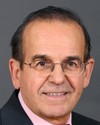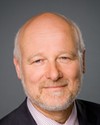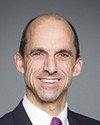Mr. Chairman, members of the committee, ladies and gentlemen, thank you for having invited me to appear before your committee to speak to the health challenges involved in consecutive deployments.
I am MGen Walter Semianiw, Chief of Military Personnel of the Canadian Forces. With me today is Brigadier-General Hilary Jaeger, Commander Canadian Forces Health Services Group, Director General Health Services and Canadian Forces Surgeon General.
My mission as the chief of military personnel for the Canadian Forces is to recruit, train, prepare, support, and recognize military personnel and their families for service to Canada. I'm therefore responsible for implementing programs and services that promote the medical, mental, and spiritual well-being of military personnel.
It has been abundantly clear since the beginning of Canada's mission in Afghanistan that the Canadian public demands full-spectrum, high-quality health care for our men and women in uniform, those whose health has suffered as a result of military operations. Accordingly, we have made care of the fallen, the injured, and their families a top priority for our organization. At the time, it's critically important for military personnel to be healthy, fit, and ready for deployment in order to fulfill Canada's military commitments at home and abroad.
Soldiers, sailors, airmen, and airwomen are the most complex, sophisticated, and valuable systems in the Canadian Forces. It takes an equally complex system to keep military personnel in top form, to care for them, and to help them recover when they suffer injury.
Health care services for personnel of the Canadian Forces are provided by uniformed and civilian health care providers working in the Canadian Forces Health Services Group under the command of Brigadier-General Jaeger.
The Canadian Forces Health Services Group is a multi-faceted organization with approximately 120 different units of varying sizes in different areas around the world. The units can range from a large group of about 300 health service personnel on bases such as Valcartier or Petawawa to two personnel providing health care support on any of Her Majesty's ships or at Canada's most northern military station at Alert.
Canadian Forces personnel are offered a full range of health services, from health promotion and illness prevention to treatment and rehabilitation. If the health care clinic on a particular base cannot offer a required service, then that service is purchased from the civilian health care sector. Arrangements have been made across the country to ensure that regional care is provided close to the member's immediate family and support system, which is a foundation of the conceptual construct that we have in place.
Relocation away from extended networks of family and friends is a part of military service that military members selflessly accept. This creates difficulty during times of illness or following an injury. A strong social support network is an essential ingredient to the successful recovery from any significant illness or injury. In recognition of this, the Canadian Forces has instituted a number of programs and services, such as the operational stress injury social support network, the return to work program, and an evolving enhanced local casualty support capability.
I'd be remiss if I did not take this opportunity to also mention the services available to our families. Although the Canadian Forces is not mandated to provide direct clinical services to family members, some examples of the types of assistance available that we provide include Canadian Forces social workers and other mental health professions who provide counselling to the entire family, if required, as part of the healing process for the individual suffering from a mental health illness, that being the member. There is also the Canadian Forces member assistance program, a confidential service available through a 1-800 number 24 hours a day, 365 days a year. It is available to family members who need psychological, financial, legal, or spiritual assistance. On a personal note, I have personally used this system and I can attest to the fact that it has provided me a response within 24 hours. The operational stress injury social support network also has a family support program in place. And finally, military family resource centres at bases all across Canada offer a myriad of services for family members.
For certain patients requiring longer-term, ongoing care, navigating through a maze of civilian health care providers and Canadian Forces clinical services can prove challenging. That is indeed a fact.
Members also face uncertainties when they're released from the Canadian Forces for medical reasons and are required to obtain health care services and benefits from Veterans Affairs Canada or through a provincial system. To coordinate and simplify this process for the individual, the Canadian Forces has put in place a robust care management program.
Case managers service a primary point of contact for the member to help them navigate effectively through the military and civilian health care systems. In addition, several Canadian Forces health services clinics are located in larger cities where much of the initial casualty management and treatment for seriously ill or injured members is done in civilian facilities. To maintain close liaison and to follow up the Canadian Forces individuals who are admitted to civilian facilities, the Canadian Forces Health Services Group employs link nurses, that is, nurses who act as a link between the military and civilian health care system.
I now wish to elaborate on mental health services that have recently seen dynamic changes to increase capacity to deal with post-deployment mental health care, an issue that I'm sure will be examined here as part of this committee.
In the latter part of the 1990s, instances of post-traumatic stress disorder and other psychological injuries began to appear in military personnel following deployment to the former Yugoslavia and peace support missions in Africa. To effectively manage this need for specialized mental health care, the Canadian Forces established five operational trauma and stress support centres, which we also call OTSSCs, which opened in September 1999.
The mental health care providers, working in the operational trauma and stress support centres, provide comprehensive assessment and treatment for operational stress injuries such as post-traumatic stress disorder, using a standardized, interdisciplinary model of care. In her November 2007 report on Canadian Forces health services, the Auditor General did state that the Canadian Forces is employing a best practice in the mental health field, that is, an evidence-based practice whereby its qualified professionals in social work, addictions counselling, and the treatment of mental health illness take part in training and have access to the information and development in treating mental health illnesses in order to keep up in their profession.
Canadian Forces personnel also receive psychological fitness training throughout their career, beginning with their initial recruitment training. This training provides them with tools to help them look after their individual well-being or with the skills they require to help others. For example, leaders learn how to recognize and react to stress conditions in their subordinates. Medical personnel receive clinical training in recognition and treatment of mental illness, and mental health professionals receive in-depth, specialized training.
For the current mission in Afghanistan, mental health providers, consisting of a psychiatrist, a social worker, and a mental health nurse, are assigned to each rotation. These professionals take part in the pre-deployment training and are part of the overall health care team based in the Kandahar airfield. Deploying mental health professionals has been an invaluable tool in preventing and providing early intervention for operational stress injuries.
One area of ongoing concern that has been recognized is the reluctance of soldiers to come forward when they experience symptoms. This is being addressed through an outreach educational effort to change attitudes within the Canadian Forces toward those suffering from mental health illness. The Canadian Forces operational stress injury social support peer network has also made significant inroads to break down barriers to receiving care and to reducing the stigma associated with mental illness.
One very important tool in early detection and in addressing the stigma is the post-deployment screening of personnel who have returned from Afghanistan. The screening is intended to take place between months four and six after returning, although nothing prevents an individual who has any concerns from coming forward to seek help at any time. Unit commanders are accountable to ensure their personnel complete their screening. As well, commanders who recognize there is an issue with a particular individual are aware of the resources that can be used for support and are fully encouraged to move as quickly as possible, when an instance arises, to provide that support.
Since 2003, when the Canadian Forces received the results of a Statistics Canada survey on mental health within the Canadian Forces, massive changes have taken place in mental health. A national mental health strategy, known as the Rx2000 mental health initiative, was developed. It is close to being finally implemented.
By 2009, the Canadian Forces will have nearly doubled its mental health human resources, going from 229 to 447 mental health professionals involving an estimated $98 million.
Let me close by stating that the Canadian Forces health care system is the 14th medical system in Canada and must mirror all aspects of care for its military personnel that are provided by an individual provincial health care system. It has the added and most significant responsibility of caring for those who are injured on operations, nothing a provincial system must do up front.
I'd like to stress that medical mental care is available for the asking to any member of the Canadian Forces. There is a robust and adaptive system to ensure that those with post-traumatic stress disorder and other deployment-related health problems get promptly identified, appropriately supported, and effectively treated.
Men and women of the Canadian Forces are getting the care and support they need. This is corroborated in the May 2006 report by Senator Kirby, entitled Out of the Shadows at Last, where he states:
The Committee is pleased that the Department of National Defence offers such a wide array of services to Canadian Forces members who may experience mental health problems. The provision of services for family support as well as medical treatment and casualty support is commendable.
Ladies and gentlemen, Chairman, I thank you for this opportunity to address you, and I look forward to your questions at this point.

